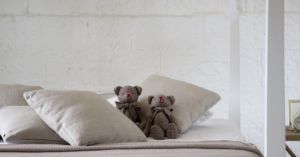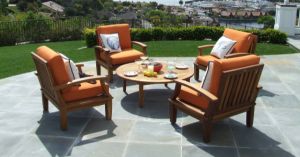When buying a new sofa, 36% of purchasers say they intend to keep the new item for five to nine years, while 28% expect to keep theirs for 15 years or more. While high-quality furniture can last a lifetime if it’s well cared for, the cushions and upholstery on that furniture will rarely be as fortunate. Between kids, pets, and accidental food spills, it’s almost impossible to keep from staining, ripping, or otherwise wearing out the fabric. Fortunately, that’s where custom pillow covers and custom slipcovers come in handy. Custom sofa slipcovers, pillow covers, and covers for other kinds of furniture are manufactured in the United States and designed specifically for your own furniture. Read on to learn why custom slipcovers and pillow covers are the single best way to revive your furniture and redecorate your home -- affordably, comfortably, and in-style.
The Problem With Standard Slipcovers
You may be thinking, “I’ve seen cheap slipcovers in my local supermarket before. What’s the big deal with custom-made ones?” And you’re right -- it isn’t actually difficult to find covers for sofas, pillows, and kitchen chairs at supermarkets and furniture stores. Usually, these are sized according to general specifications for the furniture industry, and with enough tucking and pinning (and some luck), it’s possible to get a decent fit. But here’s the problem: slipcovers like these are going to look like oversized bedsheets on your furniture. They’re always either too small, or loose and baggy, because the manufacturer tried to make them able to fit every random piece of furniture, everywhere. They also typically feature long straps, dangling every which way, that you’re supposed to tie together to hold the cover in place. With custom slipcovers, you don’t have to worry about the fit not being right. After taking detailed measurements of your furniture, the slipcover manufacturer will design covers that fit your own furniture perfectly.
An Alternative to Buying New, Expensive Furniture
When you need to redecorate a room, the most expensive investment you’ll need to make is in the furniture. A couch and chairs say so much about a home’s decor -- you can’t simply paint the walls around them and expect that to really update your look. But new furniture is notoriously expensive, especially when you buy furniture that is comfortable, durable, and in the exact style you’re looking for. You end up with a lot going against you. And if you like to update your home’s look with the changing fashions, changing furniture every time can be simply impractical. Instead, you can simply buy custom slipcovers, tailored specifically to fit your furniture -- and your style. This is a significantly smaller investment than buying new furniture would be, and thanks to these covers’ incredible quality, you’re getting basically the same result. Whether you want to redecorate your home or cover up damaged upholstery, custom slipcovers are the best way to do either one.


